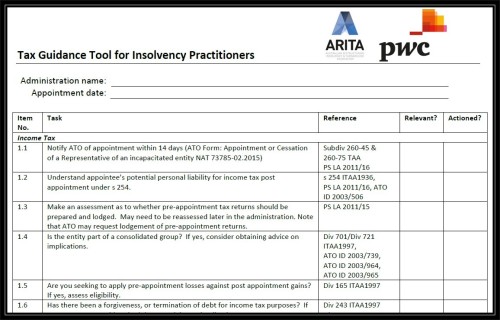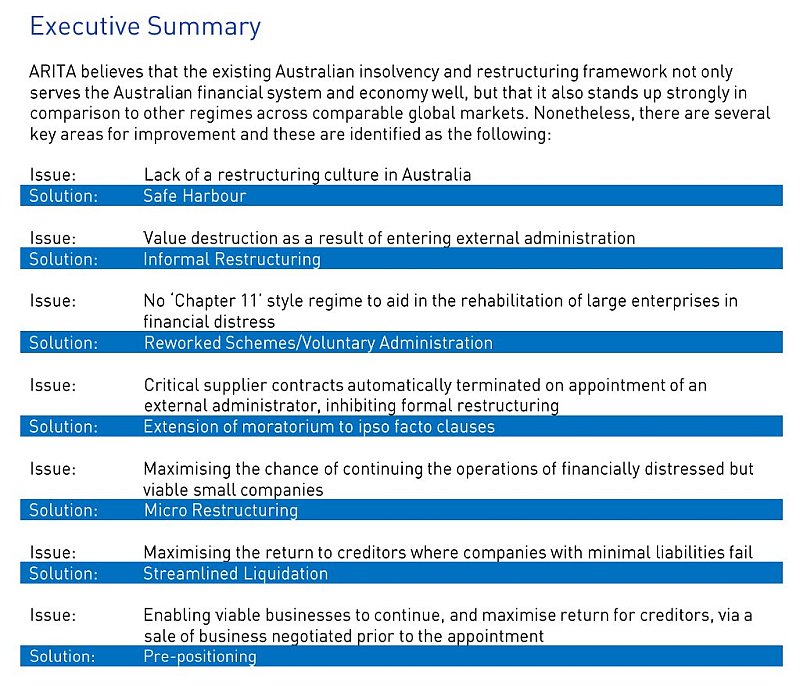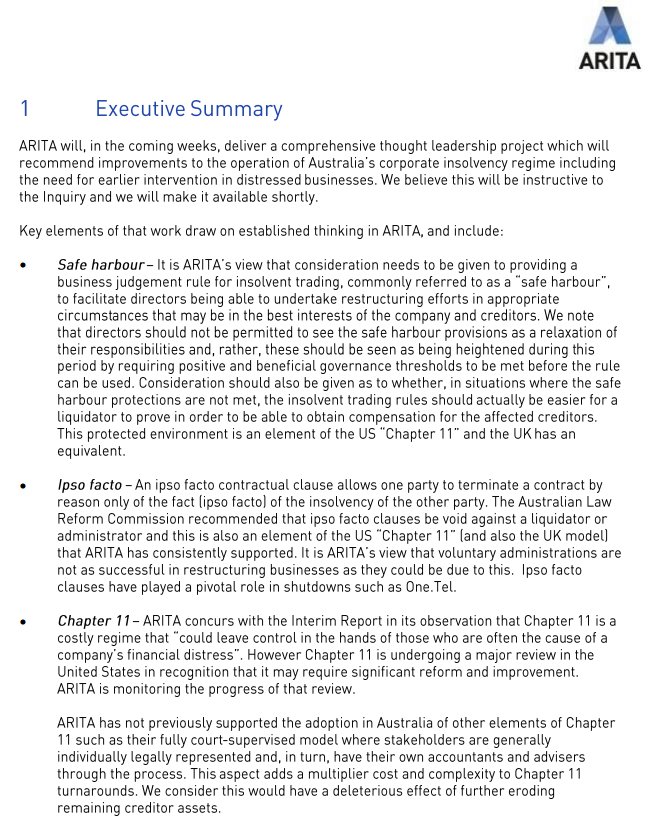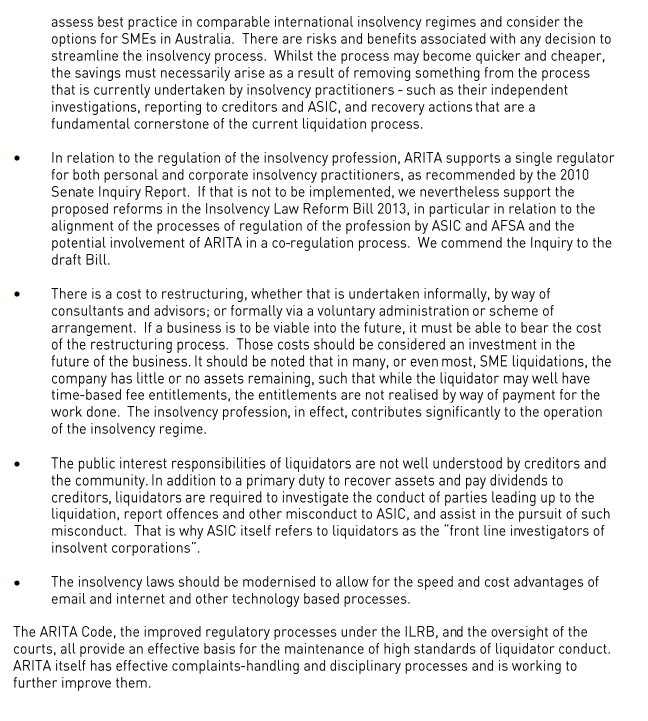Is there evidence that Australia’s external administration regime causes otherwise viable businesses to fail and, if so, what could be done to address this?
This is the question being asked about external administrations in the Interim Report of the Financial System Inquiry (FSI) (July 2014). The FSI says it would value views on the costs, benefits and trade-offs of the following policy options or other alternatives:
- No change to current arrangements.
- Implement the 2012 proposals to reduce the complexity and cost of external administration for SMEs. [See below for details of these proposals.]
The brief section of the FSI’s report dealing with external administration may be viewed HERE. (The full report in pdf format is available HERE.)

David Murray, FSI chairman. Artwork from bluenotes.anz.com
US Chapter 11 regime?
Adoption by Australia of a US Chapter 11 style form of external administration could still be an option, although the FSI has already given it the thumbs down, as this extract from its interim report shows:
“The Inquiry considers adopting such a regime would be costly and could leave control in the hands of those who are often the cause of a company’s financial distress. Capital would be maintained in a business that is likely to fail, which would restrict or defer the capital from being channelled to more viable and productive enterprises. Adopting such a regime would also create more uncertainty for creditors by limiting their rights. The Inquiry notes that Chapter 11 has rarely enabled businesses to continue as going concerns in the long term. There is little empirical evidence that Australia’s voluntary administration process is causing otherwise viable businesses to fail. The Inquiry would like stakeholders to provide any empirical evidence that supports that view.”
Second round of submissions to FSI
Submissions in response to the Interim Report are due by 26 August 2014. Submissions can be lodged online using the Financial System Inquiry special facility, or may be lodged by email or post: fsi@fsi.gov.au or Financial System Inquiry, GPO Box 89, Sydney NSW 2001.
Insolvency reform proposals of 2012
The 2012 insolvency reform proposals to which the FSI specifically refers in its request for second round submissions concern:
- Registration and discipline of insolvency practitioners (See note 1 at end of post for more information).
- Specific rules relating to external administrations (note 2).
- Regulator powers and miscellaneous amendments (note 3).
The Explanatory Material issued with the Insolvency Law Reform Bill on 19 December 2012 can be viewed HERE.
“Thought leadership”
The Australian Restructuring Insolvency & Turnaround Association (ARITA) (previously known as the Insolvency Practitioners Association) says it has embarked on “a major project to drive thought leadership around our insolvency regime”. It is asking insolvency practitioners who want to make a submission to FSI to work with the professional association:
“ARITA has embarked on a major project to drive thought leadership around our insolvency regime. Along with some of ARITA’s excellent previous work, significant new work has already been completed and ARITA members will soon be asked for comment on key aspects of our policy positions. This work is, obviously, well timed to support the FSI request for submissions. ARITA will actively work to represent the views of its membership and the profession to the FSI. We would urge all members and their firms to work with ARITA on providing strong and consistent representation to the FSI. If you or your firm is looking at making its own submission, please let ARITA know so that we can collaborate with you.” ARITA Press Release 15/7/2014
NOTES re Proposals in December 2012 Insolvency Reform Bill:
Note 1: Registration and discipline of insolvency practitioners
Common rules regarding: the physical registers of insolvency practitioners; registration and disciplinary Committees.
Note 2: Specific rules relating to external administrations
Common rules regarding: •
- Remuneration and other benefits received by the insolvency practitioner;
- The handling of administration or estate funds;
- The provision of information by insolvency practitioners during an external administration or bankruptcy;
- The meetings of creditors during an external administration or bankruptcy;
- Committee of inspection formed as part of an external administration or bankruptcy; and
- The external review of the administration of an estate or insolvency.
Note 3, part (a): Regulator powers and miscellaneous amendments
Provide ASIC with further powers to assist it in its oversight of the regulation of registered liquidators. In particular, the Bill amends the ASIC Act to:
- enable ASIC to require the provision of information and books as part of an ASIC proactive surveillance program;
- enable ASIC to provide administration information to a person with a material interest in the information; and
- improve the transparency of ASIC oversight of the corporate insolvency industry.
Note 3, part (b): Regulator powers and miscellaneous amendments
Amend the Bankruptcy Act to enable ITSA to provide information relevant to the administration of the corporate law to ASIC.
Note 3, part (c): Regulator powers and miscellaneous amendments
A range of miscellaneous amendments, including:
- amending the Acts to strengthen the penalties for breach of a bankrupt’s or directors’ obligations to provide a report as to affairs (RATA), or the books of the company, to an insolvency practitioner;
- amend the Corporations Act to provide a process for the automatic disqualification of directors that have failed to provide a RATA, or the books of the company, to a registered liquidator until they have complied with those obligations; and
- amend the Acts to enable the assignment of an insolvency practitioner’s statutory rights of actions.



 The following table sets out the proposed legislation by using extracts from the Bill and related official material.
The following table sets out the proposed legislation by using extracts from the Bill and related official material.




